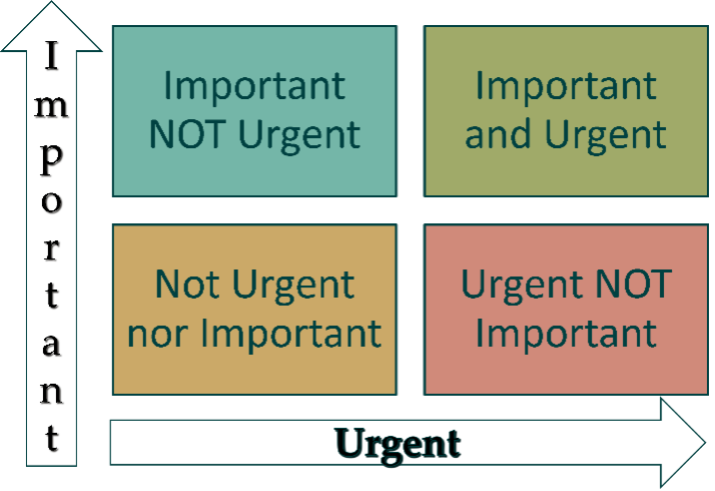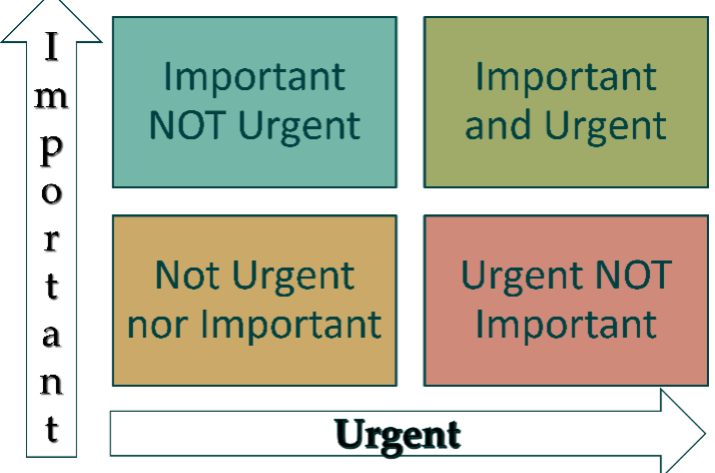In a fast-paced constantly changing world, prioritizing what to do when is relevant and valuable. In the absence of prioritizing, we may find ourselves doing things that are less important or will remain incomplete until another task is done. Sometimes prioritizing is easy and other times it is valuable to take time and use different approaches.
To determine level of priority for individual tasks, many use the Eisenhower Matrix. Quite simply, this approach puts Important versus Urgent on a quadrant.

The tasks that are both important and urgent are the top priority. The challenge is to then decide whether to focus on doing the Important Not Urgent based on whether there is an ability to delegate the Urgent Not Important. If you can delegate that is ideal. If you cannot delegate, then the next questions becomes whether on task is dependent on completion of another. The intention is that you do the important and urgent and schedule the important not urgent.
In addition to this approach, the same quadrant can effectively be used to prioritize based on other factors:
- Effort versus Impact – high impact is a priority with level of effort and time influencing which comes next.
- Value versus Cost – high value is a priority with the cost determining the level of priority for the value.
Once you have your list of priorities, there are different processes to put them in order:
- Rank the level of priority with 1,2, 3. 1 = high priority, 2 = important priority, and 3 = less important or more time available.
- Put the to-do list in order of priority based on dependencies. Specifically, if completing one task is dependent on something else being done, that can determine the order for doing the tasks.
- Put things in order of time sequence. When there is a specific order of completion for tasks based on dependencies and timing, the order is clear.
- A = must, B = should, C = could, D = delegate, E = eliminate from Brian Tracy. Simply determine whether each task is an A, B, C, D, or E and address them accordingly.
- Compare task priority to develop sequence. Using one or more of the matrixes described above, list the tasks in order.
Keep in mind that one priority on your list is self-care. This is something that is often forgotten and it is discussed in coach training. It is with self-care that you will have the energy and mindset to effectively and efficiently complete your priorities.




